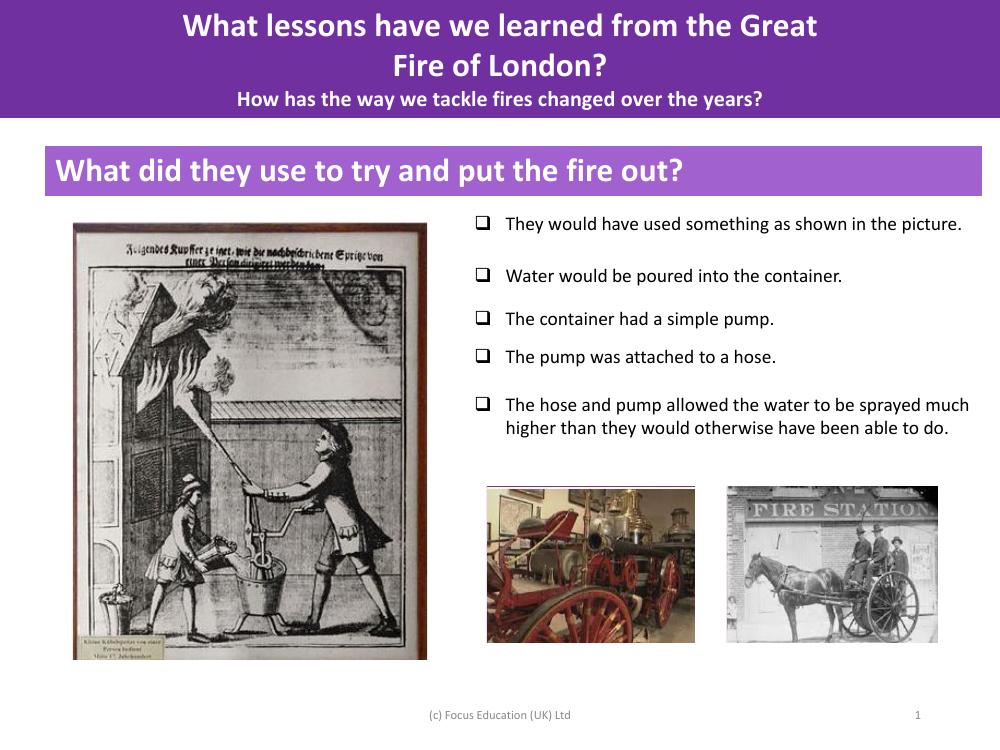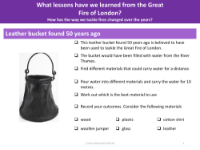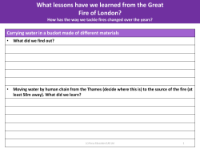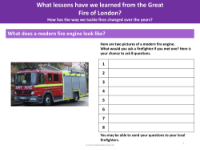What did they use to try and put the fire out? - Info sheet

History Resource Description
In the aftermath of the Great Fire of London, the methods used to extinguish fires were primitive by today's standards. To combat the flames, individuals would have utilised a device similar to the one depicted in the accompanying image. This early firefighting equipment consisted of a container into which water was poured. The container featured a simple pump mechanism that was connected to a hose, allowing water to be propelled with greater force. This setup enabled firefighters to spray water at a much higher reach than could be achieved by merely throwing water from buckets or other containers, thus improving their ability to tackle blazes that had spread upwards.
Looking back at historical firefighting techniques, it is clear that the Great Fire of London was a pivotal event that influenced how fires are managed. At that time, there were no fire engines as we know them today; the first semblance of a 'fire engine' would not emerge until nearly a century later. One of the earliest fire engines is pictured, demonstrating how water was manually pumped to extinguish fires at height. To illustrate this old technology's effectiveness, one could replicate the action using a water pump similar to those found in swimming pools. By filling a bucket with water and using the pump to spray the water as high as possible, one could even turn the demonstration into a competitive activity. This historical context underscores the evolution of firefighting over the years and the lessons learned since the monumental fire that reshaped London.





